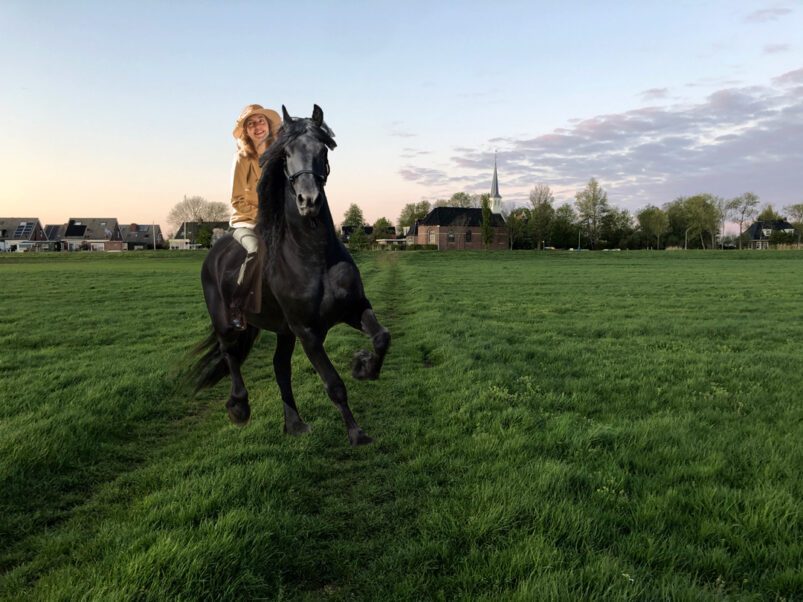It’s a worldwide phenomenon: city living is more popular than ever and rural communities are shrinking fast. The result? Soaring house prices in urban centres and vacant properties and dwindling resources in the provinces. The Faro Convention insists that heritage should play a role in social issues. So can heritage provide a way to counter rural decline? I explored this issue with Gijsje Stephanus. As part of her Human Technology studies at Hanze University of Applied Sciences in Groningen, she has been examining the influence of heritage on the quality of life in small villages. In her view, it’s the quality of a place that counts, and heritage is very much part of that equation: ‘When heritage comes alive and is put to good use, it will boost the appeal of a village. And the more appealing a village is, the more people will come to live there.’
I am no stranger to the countryside. I grew up in a Frisian village that is home to a whopping 345 inhabitants. Everyone knows everyone else. At the local school, I had four classmates and every one of them had a horse. The only public amenities – the chip shop and the primary school I attended – have now disappeared. But in spite of this, the population hasn’t shrunk. The birth rate may have fallen, but the village is kept alive by well-to-do retirees with a love of sailing, who move to the country to enjoy their old age. And what better destination than beautiful Friesland, where heritage is alive and well? The Frisian language, the province’s eleven historic towns, sweet treats like sûkerbôlle, the magnificent Fryske hynders, the skûtsjesilen regata… a diverse cultural heritage that is the pride of Friesland and gives the province its own unique appeal. Could Gijsje be on to something?
One place where heritage is certainly used to improve the quality of life is Kloosterburen in the neighbouring province of Groningen. This village was home to a monastery in the Middle Ages. Although very little of the monastery complex remains, the intangible heritage of ‘the monastic spirit’ has been harnessed as a source of inspiration to keep the village attractive and liveable. This monastic ideal centres on the notion that all things should be connected. This ideal was
applied to a number of local care institutions that were on the brink of collapse. Care for the elderly, children and people with a disability is now provided by a single team, so that they can all continue to exist side by side. Meanwhile the monastery grounds have been transformed into a community garden and the old church into a yoga school. And it works: unlike other villages in the area, Kloosterburen is growing. And, as in my home village, the new residents are urbanites from the west of the country.
Vibrant heritage seems to make small villages attractive to newcomers. But at the same time it upsets the balance of village life. Both in Kloosterburen and in my own village, the influx of city folk caused tensions. New residents were seen as strangers, outsiders with foreign interests, culture and language. This presented problems for those villagers who found change scary and were very attached to the way things had been for decades. One of the houses in my village bears a Frisian moto It hoecht net oars, which roughly translates as ‘Things are fine as they are’.
The influx of newcomers and the clash of cultures is not unique to the Dutch countryside. Architect Rem Koolhaas and NRC correspondent Caroline de Gruyter have highlighted a link between the pace of change in rural areas and the growth of populism. In the Swiss village where Koolhaas had a holiday home, the original farming population disappeared within twenty years. In their place came wealthy urbanites and apartment complexes that housed immigrants. Vineyards and farmland became office parks. De Gruyter is convinced that such developments have led to the rise of the right-wing nationalist Swiss People’s Party (UDC), now the dominant political force in many of these areas. The traditional inhabitants have seen the world they knew go up in smoke. The more control they lose over their villages, the more nostalgic and conservative they become.
Happily, the balance in Kloosterburen and in my own village has now been restored. The newcomers have been accepted. Perhaps because people realized that they are not only a burden, but also a source of income and a way of keeping the countryside alive. Living heritage can attract people and resources, but the local population will have to accept that newcomers bring change as well as benefits.
See you next time,
Alma

